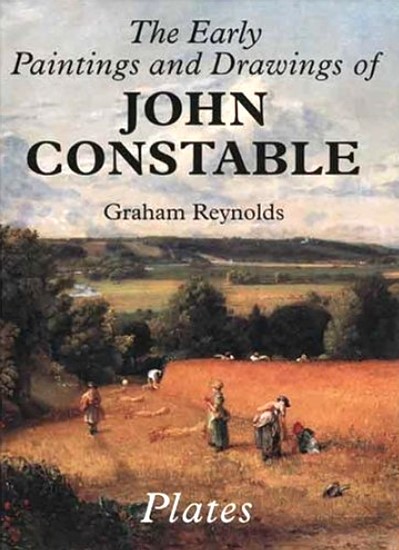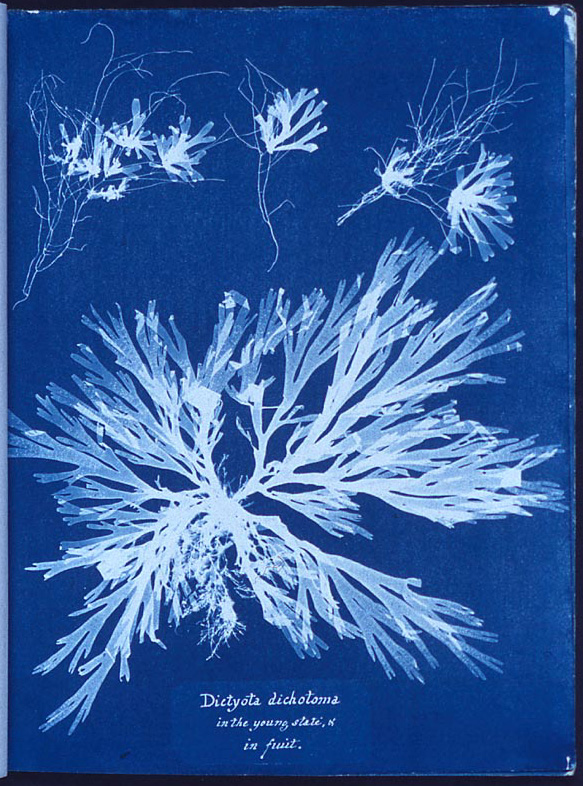|
Henri Le Secq
Jean-Louis-Henri Le Secq des Tournelles (18 August 1818 – 26 December 1882) was a French painter and photographer. After the French government made the daguerreotype open for public in 1839, Le Secq was one of the five photographers selected to carry out a photographic survey of architecture (''Commission des Monuments Historiques''). Early life Jean-Louis-Henri Le Secq des Tournelles was born in 1818 in Paris, of an ancient noble family from Normandy. His father was a politician. Jean-Louis-Henri was trained in sculpture and worked in several studios. He was also a collector of wrought iron objects and the Musée le Secq des Tournelles in Rouen is devoted to him. He started his photographic career while still working as a painter in the studio of Paul Delaroche. Middle years He experimented with various photograph processing techniques together with his colleague Charles Nègre and later worked with Gustave Le Gray learning the waxed-paper negative process. This process ... [...More Info...] [...Related Items...] OR: [Wikipedia] [Google] [Baidu] |
Gustave Le Gray
Jean-Baptiste Gustave Le Gray (; 30 August 1820 – 30 July 1884)Le Corre, Florence "Translated from the catalogue ''Une visite au camp de Châlons sous le Second Empire: photographies de Messieurs Le Gray, Prévot...'', Paris: musée de l'Armée, 1996, pp. 130-131." Retrieved September 15, 2008. was a French painter, draughtsman, sculptor, print-maker, and photographer. He has been called "the most important French photographer of the nineteenth century" because of his technical innovations, his instruction of other noted photographers, and "the extraordinary imagination he brought to picture making."J. Paul Getty MuseumGustave Le Gray, Photographer. July 9 - September 29, 2002.Retrieved September 14, 2008. He was an important contributor to the development of the wax paper negative. Biography Gustave Le Gray was born on 30 August 1820 in Villiers-le-Bel, Val-d'Oise. He was an only child, and his parents encouraged him to become a solicitor's clerk, but from a young age, he aspir ... [...More Info...] [...Related Items...] OR: [Wikipedia] [Google] [Baidu] |
19th-century French Painters
The 19th (nineteenth) century began on 1 January 1801 ( MDCCCI), and ended on 31 December 1900 ( MCM). The 19th century was the ninth century of the 2nd millennium. The 19th century was characterized by vast social upheaval. Slavery was abolished in much of Europe and the Americas. The First Industrial Revolution, though it began in the late 18th century, expanding beyond its British homeland for the first time during this century, particularly remaking the economies and societies of the Low Countries, the Rhineland, Northern Italy, and the Northeastern United States. A few decades later, the Second Industrial Revolution led to ever more massive urbanization and much higher levels of productivity, profit, and prosperity, a pattern that continued into the 20th century. The Islamic gunpowder empires fell into decline and European imperialism brought much of South Asia, Southeast Asia, and almost all of Africa under colonial rule. It was also marked by the collapse of the large S ... [...More Info...] [...Related Items...] OR: [Wikipedia] [Google] [Baidu] |
1882 Deaths
Year 188 (CLXXXVIII) was a leap year starting on Monday of the Julian calendar. At the time, it was known in the Roman Empire as the Year of the Consulship of Fuscianus and Silanus (or, less frequently, year 941 ''Ab urbe condita''). The denomination 188 for this year has been used since the early medieval period, when the Anno Domini calendar era became the prevalent method in Europe for naming years. Events By place Roman Empire * Publius Helvius Pertinax becomes pro-consul of Africa from 188 to 189. Japan * Queen Himiko (or Shingi Waō) begins her reign in Japan (until 248). Births * April 4 – Caracalla (or Antoninus), Roman emperor (d. 217) * Lu Ji (or Gongji), Chinese official and politician (d. 219) * Sun Shao, Chinese general of the Eastern Wu state (d. 241) Deaths * March 17 – Julian, pope and patriarch of Alexandria * Fa Zhen (or Gaoqing), Chinese scholar (b. AD 100) * Lucius Antistius Burrus, Roman politician (executed) * Ma Xiang ... [...More Info...] [...Related Items...] OR: [Wikipedia] [Google] [Baidu] |
1818 Births
Events January–March * January 1 ** Battle of Koregaon: Troops of the British East India Company score a decisive victory over the Maratha Empire. ** Mary Shelley's ''Frankenstein'' is published anonymously in London. * January 2 – The British Institution of Civil Engineers is founded. * January 3 (21:52 UTC) – Venus occults Jupiter. It is the last occultation of one planet by another before November 22, 2065. * January 6 – The Treaty of Mandeswar brings an end to the Third Anglo-Maratha War, ending the dominance of Marathas, and enhancing the power of the British East India Company, which controls territory occupied by 180 million Indians. * January 11 – Percy Bysshe Shelley's ''Ozymandias'' is published pseudonymously in London. * January 12 – The Dandy horse (''Laufmaschine'' bicycle) is invented by Karl Drais in Mannheim. * February 3 – Jeremiah Chubb is granted a British patent for the Chubb detector lock. * February 5 – Upon his death, K ... [...More Info...] [...Related Items...] OR: [Wikipedia] [Google] [Baidu] |
Eakins Press
The Eakins Press Foundation is an American publishing house based in New York established by Leslie George Katz in 1966 and named after the painter Thomas Eakins. Since its founding in 1966, the Eakins Press Foundation has published some of the classic volumes on American art and photography, including Lee Friedlander’s ''The American Monument'', Walker Evans’s ''Message from the Interior'', and Lincoln Kirstein’s definitive monograph on Elie Nadelman. The Eakins Press Foundation was recognized as a 501(c)(3) charitable foundation in 1974. Details Katz (1918–97), a former Black Mountain College student, established the press from the proceeds of a sale of his father's collection of Thomas Eakins paintings to Joseph Hirshhorn; to this day they comprise the nucleus of the Eakins Collection at the Hirshhorn Museum and Sculpture Garden in Washington, D.C. The initial releases were a replica of the original 1855 edition of ''Leaves of Grass'', the collection of twelve poems wr ... [...More Info...] [...Related Items...] OR: [Wikipedia] [Google] [Baidu] |
Catalogue Raisonné
A ''catalogue raisonné'' (or critical catalogue) is a comprehensive, annotated listing of all the known artworks by an artist either in a particular medium or all media. The works are described in such a way that they may be reliably identified by third parties, and such listings play an important role in authentification. Etymology The term ''catalogue raisonné'' is French, meaning "reasoned catalogue"Catalogue raisonné , ''Online Merriam-Webster Dictionary''. (i.e. containing arguments for the information given, such as attributions), but is part of the of the English-speaking art world. The spelling is never Americanized to "catalog", even ... [...More Info...] [...Related Items...] OR: [Wikipedia] [Google] [Baidu] |
Cathédrale Strasbourg
Strasbourg Cathedral or the Cathedral of Our Lady of Strasbourg (french: Cathédrale Notre-Dame de Strasbourg, or ''Cathédrale de Strasbourg'', german: Liebfrauenmünster zu Straßburg or ''Straßburger Münster''), also known as Strasbourg Minster, is a Catholic cathedral in Strasbourg, Alsace, France. Although considerable parts of it are still in Romanesque architecture, it is widely consideredSusan Bernstein''Goethe's Architectonic Bildung and Buildings in Classical Weimar'' The Johns Hopkins University Press to be among the finest examples of Rayonnant Gothic architecture. Architect Erwin von Steinbach is credited for major contributions from 1277 to his death in 1318, and beyond through his son Johannes von Steinbach, and his grandson Gerlach von Steinbach, who succeeded him as chief architects. The Steinbachs's plans for the completion of the cathedral were not followed through by the chief architects who took over after them, and instead of the originally envisioned tw ... [...More Info...] [...Related Items...] OR: [Wikipedia] [Google] [Baidu] |
Cyanotype
The cyanotype (from Ancient Greek κυάνεος - ''kuáneos'', “dark blue” + τύπος - ''túpos'', “mark, impression, type”) is a slow-reacting, economical photographic printing formulation sensitive to a limited near ultraviolet and blue light spectrum, the range 300 nm to 400 nm known as UVA radiation. It produces a cyan-blue print used for art as monochrome imagery applicable on a range of supports, and for reprography in the form of blueprints. For any purpose, the process usually uses two chemicals: ferric ammonium citrate or ferric ammonium oxalate, and potassium ferricyanide, and only water to develop and fix. Announced in 1842, it is still in use. History The cyanotype was discovered, and named thus, by Sir John Herschel who in 1842 published his investigation of light on iron compounds, expecting that photochemical reactions would reveal, in form visible to the human eye, the infrared extreme of the electromagnetic spectrum detected by his ... [...More Info...] [...Related Items...] OR: [Wikipedia] [Google] [Baidu] |
Henri Le Secq Chartres
Henri is an Estonian, Finnish, French, German and Luxembourgish form of the masculine given name Henry. People with this given name ; French noblemen :'' See the 'List of rulers named Henry' for Kings of France named Henri.'' * Henri I de Montmorency (1534–1614), Marshal and Constable of France * Henri I, Duke of Nemours (1572–1632), the son of Jacques of Savoy and Anna d'Este * Henri II, Duke of Nemours (1625–1659), the seventh Duc de Nemours * Henri, Count of Harcourt (1601–1666), French nobleman * Henri, Dauphin of Viennois (1296–1349), bishop of Metz * Henri de Gondi (other) * Henri de La Tour d'Auvergne, Duke of Bouillon (1555–1623), member of the powerful House of La Tour d'Auvergne * Henri Emmanuel Boileau, baron de Castelnau (1857–1923), French mountain climber * Henri, Grand Duke of Luxembourg (born 1955), the head of state of Luxembourg * Henri de Massue, Earl of Galway, French Huguenot soldier and diplomat, one of the principal commanders of Bat ... [...More Info...] [...Related Items...] OR: [Wikipedia] [Google] [Baidu] |
Société Héliographique
Lactalis is a French multinational dairy products corporation, owned by the Besnier family and based in Laval, Mayenne, France. The company's former name was Besnier SA. Lactalis is the largest dairy products group in the world, and is the second largest food products group in France, behind Danone. It owns brands such as Parmalat, Président, Siggi's Dairy, Skånemejerier, Rachel's Organic, and Stonyfield Farm. History André Besnier started a small cheesemaking company in 1933 and launched its ''Président'' brand of Camembert in 1968. In 1990, it acquired Group Bridel (2,300 employees, 10 factories, fourth-largest French dairy group) with a presence in 60 countries. In 1992, it acquired United States cheese company Sorrento. In 1999, ''la société Besnier'' became ''le groupe Lactalis'' owned by Belgian holding company BSA International SA. In 2006, they bought Italian group Galbani, and in 2008, bought Swiss cheesemaker Baer. They bought Italian group Parmalat in a 2011 ... [...More Info...] [...Related Items...] OR: [Wikipedia] [Google] [Baidu] |
Reims
Reims ( , , ; also spelled Rheims in English) is the most populous city in the French department of Marne, and the 12th most populous city in France. The city lies northeast of Paris on the Vesle river, a tributary of the Aisne. Founded by the Gauls, Reims became a major city in the Roman Empire. Reims later played a prominent ceremonial role in French monarchical history as the traditional site of the coronation of the kings of France. The royal anointing was performed at the Reims Cathedral, Cathedral of Reims, which housed the Holy Ampulla of chrism allegedly brought by a white dove at the baptism of Frankish king Clovis I in 496. For this reason, Reims is often referred to in French as ("the Coronation City"). Reims is recognized for the diversity of its heritage, ranging from Romanesque architecture, Romanesque to Art Deco, Art-déco. Reims Cathedral, the adjacent Palace of Tau, and the Abbey of Saint-Remi were listed together as a UNESCO World Heritage Site in 1991 ... [...More Info...] [...Related Items...] OR: [Wikipedia] [Google] [Baidu] |








